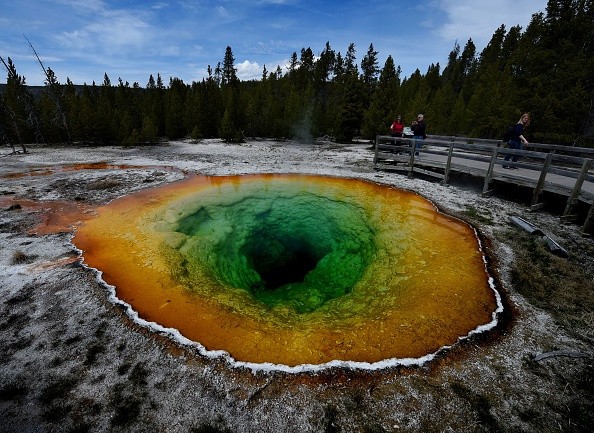Continental plate clashes usually lead to the formation of mountains and mountain ranges due to the impact caused by the collision.

How Hot Springs Help in Discovering Point of Collision
A previous crash recorded in the convergent boundaries led to the formation of the Himalayan Mountains and the Tibetan Plateau. Recent studies have revealed another clash between the continental plate and the Tibetan plateau, according to Phys.org.
Due to the global climate importance of collision between these plate tectonics, researchers proposed theories between the tectonic plates beneath the surface and the iconic behemoth.
An example of this collision involved the African Plate and the Eurasian Plate that created the series of ranges extending from the Alps in Europe to the Zagros Mountains in Iran.
Research on about 225 hot springs has led experts to the recent discovery of Indian and Asian boundaries and the activities going on beneath.
Simon Klemperer, a senior study author and a geophysics professor at the School of Earth, Energy & Environmental Sciences in Stanford said: "A principal debate amongst geologists is whether or not continental collision looks like an oceanic collision," according to Stanford News.
Efforts to Locate Geothermal Springs
Klemperer, along with his team, further researched this collusion by collecting samples within these regions for over a decade, these samples were collected both from the Buddhist territory Tibet and India.
Hot springs hundreds of miles across the mountains and plateau were tracked down, and Klemperer used the chemical bubbling method to monitor the activities going on below the surface.
Experimenting on the hot springs using noble gas helium, he was able to reveal one hot mantle, which was the Asian plate, and a colder plate which was the Indian. The helium isotope result showed the colder plate could only be detected below the Himalayas as it is completely detached from Tibet.
"It's amazing that we now have this remarkably well-defined boundary just a few kilometers wide at the surface above a plate boundary that is 100 kilometers deep," Klemperer said.
Subduction of Ocean Crust
Oceanic subduction involves the oceanic lithosphere recycled into the Earth's mantle at convergent boundaries. Oceanic subduction only occurs when two oceanic plates collide. One is being subducted by the other, that is, one sliding down and sinking beneath the other. Japan, Indonesia, and the Aleutian Islands are instances of this kind of subduction.
According to a theory, ocean subduction brings the two continental plates close together when they collide. In the 1960s, researchers proved the movement of these plates caused mountain buildings, earthquakes, and volcano eruptions, but the reason behind the movement was yet to be revealed.
Klemperer believes that this new revelation could further bring the research to discover what controls and drives plate tectonics.
According to Klemperer, more research is yet to be done as these recent findings are currently being observed in relation to the Himalaya collision.
"We're seeing the same processes through these different lenses, and we have to figure out how to put them together," Klemperer added.
For more news, updates about continental plates and similar topics don't forget to follow Nature World News!
© 2025 NatureWorldNews.com All rights reserved. Do not reproduce without permission.





